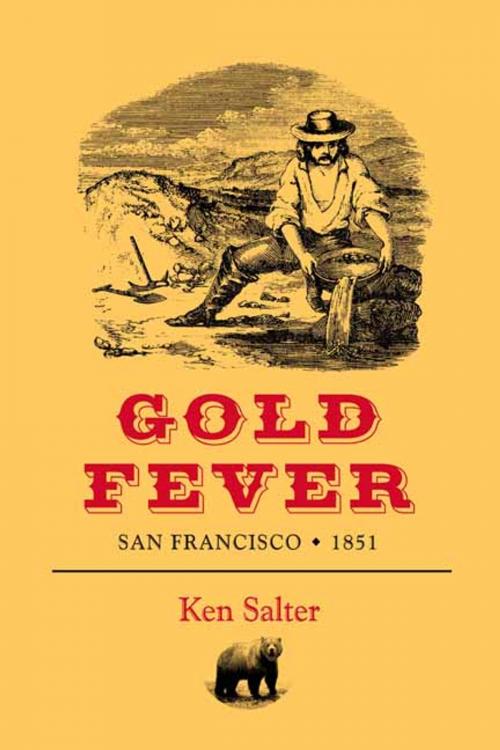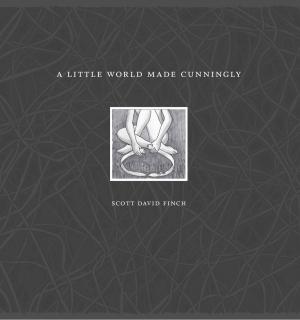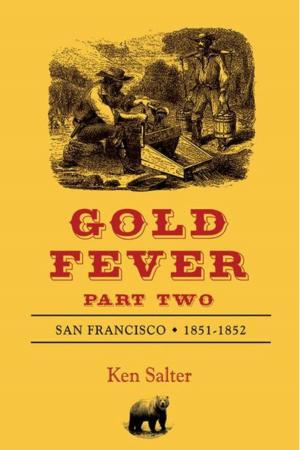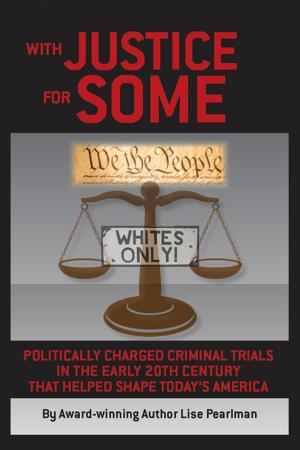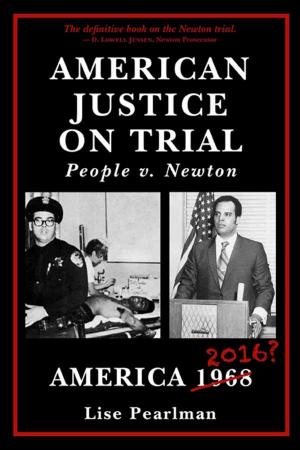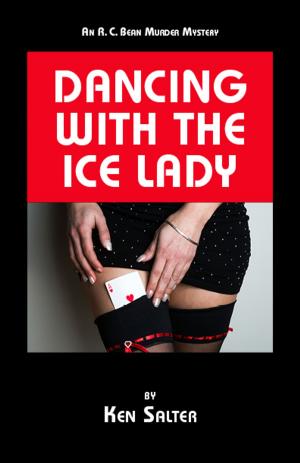Gold Fever
San Francisco 1851
Nonfiction, History, Americas, United States, 19th Century, Fiction & Literature, Historical| Author: | Ken Salter | ISBN: | 9781587902413 |
| Publisher: | Regent Press | Publication: | June 1, 2013 |
| Imprint: | Regent Press | Language: | English |
| Author: | Ken Salter |
| ISBN: | 9781587902413 |
| Publisher: | Regent Press |
| Publication: | June 1, 2013 |
| Imprint: | Regent Press |
| Language: | English |
In 1848 Yerba Buena was a sleepy, backwater trading post with 2,000 inhabitants living in tents, shanties and adobes. In 1849, John Marshall’s gold discovery reverberated around the world and the gold rush was on. Individuals lucky enough to be in California provisioned themselves with food, tents, supplies, and miners’ tools and headed for the rivers of the Sierra Nevada in search of gold. They panned the goldladen river gravels with considerable success. Reports of their successes and abundant riches became a staple news item in the European and American press. The promise of new found riches and escape from poverty in Europe and South America was not lost on poor farmers suffering failed crops and a dreadful recession. It was not lost on European governments either as a way to colonize and profit from the rich lands of California or to rid themselves of their political and social undesirables — socialists, revolutionaries, republicans, prostitutes, and political activists as well as the poor they couldn’t feed. While the exaggerated reports of gold to be picked up along the river banks excited the poor, it also stimulated unscrupulous promoters to devise schemes and set up undercapitalized joint ventures and mining societies to offer transport to California for shareholders in exchange for mortgaging their lands and inheritances to buy shares of stock in these ventures. By 1850, most easy to mine gold was gone. Yerba Buena, now named San Francisco, had become a bustling, muddy, windy, raw and dangerous town with over 2,000 saloons, 700 abandoned ships and a permanent population of 25,000 emigrants — gold seekers, merchants, whores, thugs, professional con artists and boatloads more arriving weekly. By 1851, San Francisco had suffered from major fires, land speculation, lawlessness, and political and police corruption and had become a State in the Union after the rout of local Mexican and Californio militias. With the ratio of men to women at 100-1, the new California Legislature passed a significant law affecting the status of women. The new law was designed to attract marriageable women to marry the legion of single miners and to settle permanently in the state. The law provided that a woman’s earnings and any inheritance she might receive would remain her separate property and not be subject to a husband’s or father’s control as was the case in most countries in the world. Word of this new right was not lost on Europe’s mothers with marriageable daughters, widows, adventurous women and Jezebels. Women risked their health, security and sometimes their life in the perilous six month sea voyage from Europe around Cape Horn or the mosquito and disease infested crossing of the Isthmus of Panama by dugout pirogue and mule. Still they flocked to California to snap up the rich miners and merchants or to make their fortune in other ways. It is estimated that by 1851 there were over 100,000 men seeking their fortune in the river beds and banks of the Sierra Nevada river systems from south of Mariposa, California to southern Oregon. With so many miners seeking to find and control the best gold bearing gravels and more arriving daily, disputes and rivalries were inevitable. Many American miners felt the gold should be theirs alone and pressed the California Legislature to impose a $20.00 (one and one quarter ounce of gold) per month tax on foreign miners. The tax stimulated anger and feuds pitting American and English speaking miners against the non-English speakers — Mexican, Chileans, Chinese and the 25,000 or more French who banded with the Spanish speaking foreigners to contest the tax and defend their mining claims against the “Yankees,” who sought to expel them. Our story begins in January, 1851. Pierre Dubois, chief clerk to a Paris notary, is ordered to go to San Francisco and find evidence to exonerate a rich client who lent his name and prestige to a fraudulent mining society that sent four boatloads of impoverished emigrants to San Francisco with promises of two years support only to find themselves stranded on arrival.
In 1848 Yerba Buena was a sleepy, backwater trading post with 2,000 inhabitants living in tents, shanties and adobes. In 1849, John Marshall’s gold discovery reverberated around the world and the gold rush was on. Individuals lucky enough to be in California provisioned themselves with food, tents, supplies, and miners’ tools and headed for the rivers of the Sierra Nevada in search of gold. They panned the goldladen river gravels with considerable success. Reports of their successes and abundant riches became a staple news item in the European and American press. The promise of new found riches and escape from poverty in Europe and South America was not lost on poor farmers suffering failed crops and a dreadful recession. It was not lost on European governments either as a way to colonize and profit from the rich lands of California or to rid themselves of their political and social undesirables — socialists, revolutionaries, republicans, prostitutes, and political activists as well as the poor they couldn’t feed. While the exaggerated reports of gold to be picked up along the river banks excited the poor, it also stimulated unscrupulous promoters to devise schemes and set up undercapitalized joint ventures and mining societies to offer transport to California for shareholders in exchange for mortgaging their lands and inheritances to buy shares of stock in these ventures. By 1850, most easy to mine gold was gone. Yerba Buena, now named San Francisco, had become a bustling, muddy, windy, raw and dangerous town with over 2,000 saloons, 700 abandoned ships and a permanent population of 25,000 emigrants — gold seekers, merchants, whores, thugs, professional con artists and boatloads more arriving weekly. By 1851, San Francisco had suffered from major fires, land speculation, lawlessness, and political and police corruption and had become a State in the Union after the rout of local Mexican and Californio militias. With the ratio of men to women at 100-1, the new California Legislature passed a significant law affecting the status of women. The new law was designed to attract marriageable women to marry the legion of single miners and to settle permanently in the state. The law provided that a woman’s earnings and any inheritance she might receive would remain her separate property and not be subject to a husband’s or father’s control as was the case in most countries in the world. Word of this new right was not lost on Europe’s mothers with marriageable daughters, widows, adventurous women and Jezebels. Women risked their health, security and sometimes their life in the perilous six month sea voyage from Europe around Cape Horn or the mosquito and disease infested crossing of the Isthmus of Panama by dugout pirogue and mule. Still they flocked to California to snap up the rich miners and merchants or to make their fortune in other ways. It is estimated that by 1851 there were over 100,000 men seeking their fortune in the river beds and banks of the Sierra Nevada river systems from south of Mariposa, California to southern Oregon. With so many miners seeking to find and control the best gold bearing gravels and more arriving daily, disputes and rivalries were inevitable. Many American miners felt the gold should be theirs alone and pressed the California Legislature to impose a $20.00 (one and one quarter ounce of gold) per month tax on foreign miners. The tax stimulated anger and feuds pitting American and English speaking miners against the non-English speakers — Mexican, Chileans, Chinese and the 25,000 or more French who banded with the Spanish speaking foreigners to contest the tax and defend their mining claims against the “Yankees,” who sought to expel them. Our story begins in January, 1851. Pierre Dubois, chief clerk to a Paris notary, is ordered to go to San Francisco and find evidence to exonerate a rich client who lent his name and prestige to a fraudulent mining society that sent four boatloads of impoverished emigrants to San Francisco with promises of two years support only to find themselves stranded on arrival.
